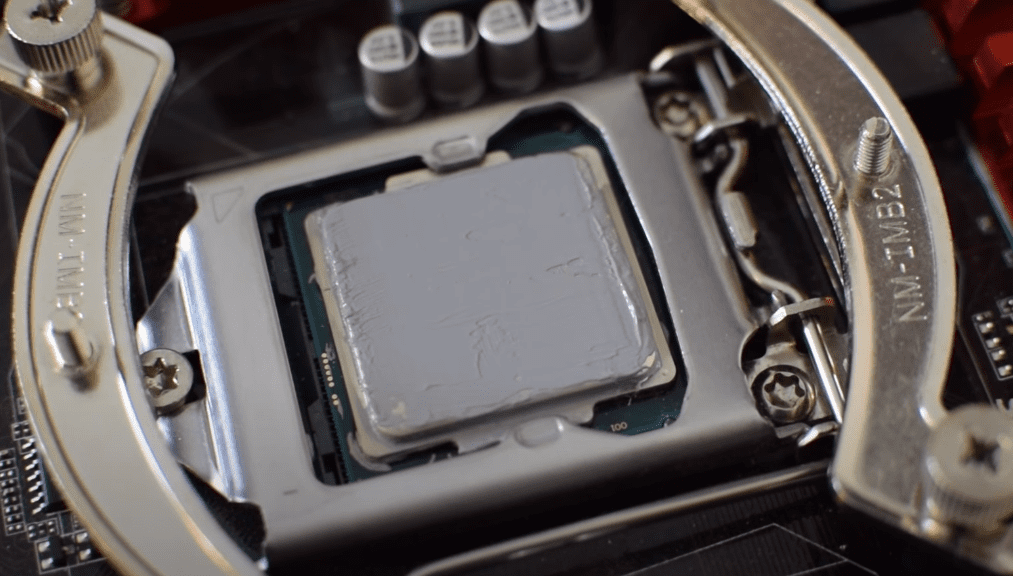


Cooling these devices is essential because excess heat rapidly degrades their performance and can cause a runaway to catastrophic failure of the device due to the negative temperature coefficient property of semiconductors.įactory PCs and laptops (though seldom tablets or smartphones) typically incorporate thermal paste between the top of the CPU case and a heat sink for cooling. A common application is to drain away waste heat generated by electrical resistance in semiconductor devices including power transistors, CPUs, GPUs, and LED COBs. Thermal paste is used to improve the heat coupling between different components. These pastes contain gallium, which is highly corrosive to aluminium and cannot be used on aluminium heat sinks. These are difficult to apply evenly and have the greatest risk of causing malfunction due to spillage.

The most effective (and most expensive) pastes consist almost entirely of liquid metal, usually a variation of the alloy galinstan, and have thermal conductivities in excess of 13 W/(m However, metal-based thermal paste can be electrically conductive and capacitive if some flows onto the circuits, it can lead to malfunction and damage. K) or more, and consist of micronized silver particles suspended in a silicone/ceramic medium.Silver thermal compounds may have a conductivity of 3 to 8 W/(m K) (watts per meter-kelvin) up to about 4 W/(m.

The filler loading can be as high as 70–80% by mass, and raises the thermal conductivity of the base matrix from 0.17–0.3 W/(m Aluminum oxide, boron nitride, zinc oxide, and increasingly aluminum nitride are used as fillers for these types of adhesives. Typical matrix materials are epoxies, silicones ( silicone grease), urethanes, and acrylates solvent-based systems, hot-melt adhesives, and pressure-sensitive adhesive tapes are also available. Thermal paste consists of a polymerizable liquid matrix and large volume fractions of electrically insulating, but thermally conductive filler. It has to be coupled with a fastener such as screws to hold the heat sink in place and to apply pressure, spreading and thinning the thermal paste. Thermal paste is an example of a thermal interface material.Īs opposed to thermal adhesive, thermal paste does not add mechanical strength to the bond between heat source and heat sink. The main role of thermal paste is to eliminate air gaps or spaces (which act as thermal insulation) from the interface area in order to maximize heat transfer and dissipation. Thermal paste (also called thermal compound, thermal grease, thermal interface material ( TIM), thermal gel, heat paste, heat sink compound, heat sink paste or CPU grease) is a thermally conductive (but usually electrically insulating) chemical compound, which is commonly used as an interface between heat sinks and heat sources such as high-power semiconductor devices. Silicone thermal compound Metal (silver) thermal compound Metal thermal paste applied to a chip Thermal paste is designed to fill surface imperfections on the surface of a chip In background: Arctic Silver thermal paste remover. From left to right: Arctic Cooling MX-2 and MX-4, Tuniq TX-3, Cool Laboratory Liquid Metal Pro, Shin-Etsu MicroSi G751, Arctic Silver 5, Powdered Diamond. Fluid used to maximize thermal contact Several containers of thermal paste of different brands.


 0 kommentar(er)
0 kommentar(er)
